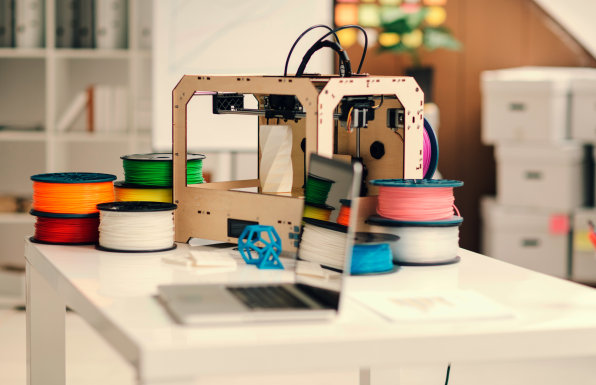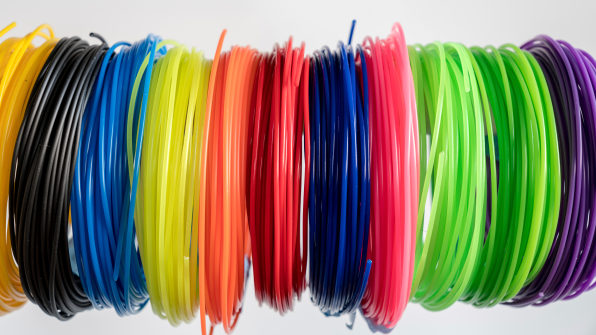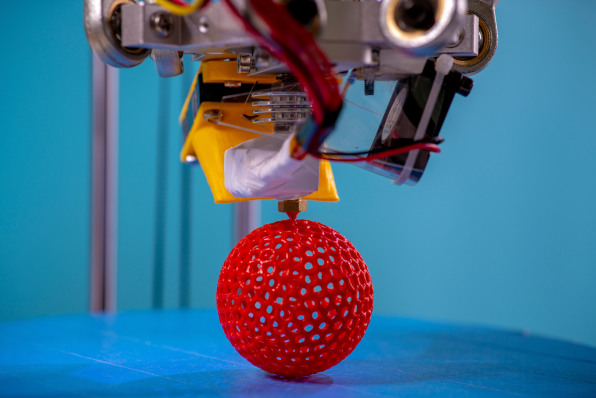- | 9:00 am
How 3D printers can inspire innovation and reduce waste
3D printers might have originally been used to create prototypes and product models, but the industry is expanding to produce larger-scale products—and even medical devices.

Although 3D printing tends to be regarded as a new form of disruptive technology, the concept actually dates back to the 1940s when it was first described in science fiction. It later cropped up in the 1970s when inventor Johannes F. Gottwald patented the Liquid Metal Recorder—an inkjet metal-material device that ran on a reusable surface by melting and remelting a removable metal fabrication.
That doesn’t mean that the 3D-printing technology of today isn’t innovative, but it does mean that the technology has a much lengthier history than most of us might realize. Today, 3D printers are used across the board to make everything from physical houses and other residences to human organs.
So what exactly is 3D printing—and how can we take advantage of the advancing technology for use in our own day-to-day lives? Here’s everything you need to know about modern 3D printers, including how much it would cost to purchase one and what you can create with a 3D printer of your own.

WHAT IS 3D PRINTING?
Although 3D printing was once primarily used to create lesser-quality prototypes and proof-of-concept products that were to be built upon using traditional building techniques and materials, the concept has rapidly advanced over the last decade or so to cover an expansive variety of uses and designs.
3D printing—otherwise known as additive manufacturing—is the practice of making a three-dimensional object from a virtually created design or digital file. The 3D printer works by printing consecutive rows of material until the final object has been created, with each layer acting as a thin cross section of the overall object or product in question.
Advancements in 3D printing have resulted in a wide assortment of uses and practices that span from amateur and professional works of art and bespoke products to more advanced uses in the medical field. Most 3D printers are able to create products from start to finish in rapid succession, which makes the technology excellent for rapid prototyping and reproduction.

HOW MUCH IS A 3D PRINTER?
Entry-level 3D printers have become more and more price-accessible over the past decade or so—with printers available for everyone from hobbyists to parents looking for STEM- or creativity-inspired printers for kids. You can expect to pay somewhere between $100 and $300 for child-friendly 3D printers and accompanying 3D printing pens, and between $300 and $500 for entry-level 3D printers designed for the hobbyist and at-home use.
Professional-grade 3D printer pricing falls within a whole different price range—and while the quality and capabilities can vary greatly from printer to printer, you should expect to shell out anywhere from $1,500 to well over $20,000 for a 3D printer capable of creating more intricate projects, such as sculptures and novelty or bespoke items.
Companies that are using 3D printers to create more complex products, such as 3D-printed houses, automotive and aviation parts, and even human organs, require an even bigger financial commitment. Industrial 3D printers are not only hard to get, but will also run a company well into the six-figure territory.

HOW DOES 3D PRINTING REDUCE WASTE?
3D printing isn’t just a breakthrough for the likes of the housing and medical industries—advancements in 3D printing are also considered to be a major win for the environment, and for companies that are committed to creating more sustainable products and goods.
Traditional manufacturing uses much more raw material: cutting pieces out of larger pieces of metal or plastic and, as a result, a larger volume of waste and scraps. 3D printing builds a structure or product layer by layer, leaving no leftover waste or excess material in the process.
The process of 3D printing prototypes and rapid reproduction is also much more streamlined than typical factory work; 3D printers work quickly and efficiently—and largely without error—which cuts down on time and a company’s overall carbon footprint.
It’s also worth noting that 3D printing tends to use more sustainable and even recycled post-consumer raw materials, such as coffee grounds, dirt, and even algae, and saw dust. This means far less reliance on such materials as steel and plastic.




































